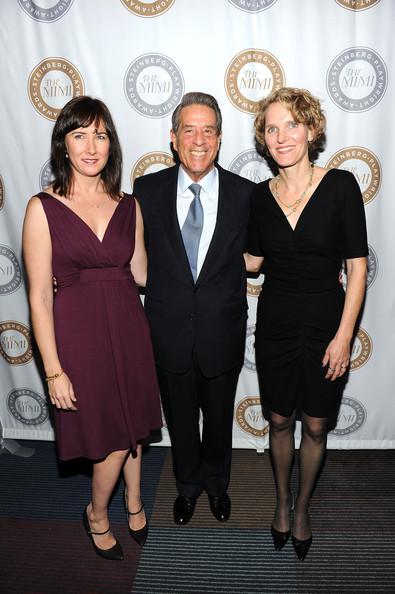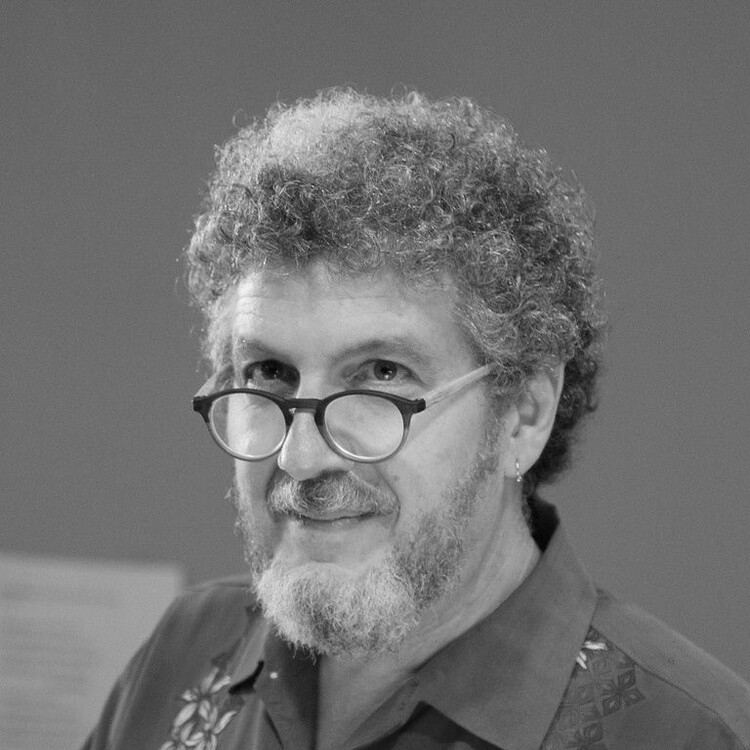A Lover's Guide to American Playwrights
Lisa D'Amour & Melissa James Gibson
A Lover's Guide to American Playwrights is a regular column by Todd London. It is part of an ongoing series of tributes to contemporary playwrights. Mostly begun as speeches at New Dramatists—for career achievement awards, to mark the end of seven-year residencies, or, in a few cases, as eulogies—these portraits celebrate the body of work, lives, and singular gifts of those brave, ferocious, foolhardy souls of those who write plays for the American theater.
Lisa D'Amour and Melissa James Gibson

Mid-career is that moment most playwrights find themselves at the edge of an abyss. The moment can last years, during which the excitable support our field bestows on emerging and early-career writers dries up and playwrights who have finally developed the chops to write their mature works often leave the theater for the rewards and empowerment of TV or the stability of teaching. Playwrights have been calling for help through this rough passage for some time. They have been asking for reasons and means to stay in the theater at all. It was, therefore, a thrill, this past week, to see the Harold and Mimi Steinberg Charitable Trust throw a lifeline to two of my most beloved writers in the form of $50,000 Steinberg Playwright Awards, also known as Mimis.
Lisa D’Amour and Melissa James Gibson have been dancing the wire stretched over this midcareer abyss for several years. It is a precarious dance. In their hands, it can also be a beautiful one. While I usually write here about one writer at a time, I want to pair them up, as the Steinberg Trust (on whose advisory panel I serve) has done, because when I think about them together, I see how they almost define opposite ends of a spectrum, from Lisa’s macro vision, stretching the potential of the dramatic through the size and shape of events, to Melissa’s almost microscopic approach, that peers into the architectural insides of the scene to explode the very notion of drama.
Lisa D’Amour. The word Playwright—even though it is a very roomy/spacious word—seems too small, too limiting for Lisa D’Amour. She is a playwright and she is many other things. She is a director, a performer, and a visionary of the event, large and small—the site-specific event, the art event, the group event, and, even, the party. She is a performance artist, a collaborative artist, an artist. She is, in other words, a stretch artist.
And as she stretches the words that would contain all she is, she stretches our sense of the possibilities of the stage, of space, words, songs, collaborations. And she stretches the container for reality as well. Her plays and interdisciplinary pieces—16 Spells to Charm the Beast, The Cataract, Nita and Zita, Detroit, Hide Town—encompass dream life and daily life, story and history, the natural and the supernatural, the mystical and the imagined, the so-called civilized and the surreal waters running under the civilized. They exist on the page but also in the world—a stone arch bridge in Minneapolis, a spectacular house in New Orleans, a man-made forest. Hers is a realm of all realms: human, animal, bestial, monstrous, or, maybe, it’s all one realm: the wild kingdom that lives beside and inside the human.
And then there are her startling images—provocative, theatrical, and impossible to stage without full engagement with the notion of the play as an event: a beast dressed in a suit climbs the side of a building twenty-six stories high. A woman in pain pulls a flower, an iris out of her eye. A young black man, living in New York City where a wolf has escaped from a Serbian circus troupe, becomes the wolf, bound hand and foot by his own lover. A girl makes a version of herself out of mud. It comes to life.
The word Playwright—even though it is a very roomy/spacious word—seems too small, too limiting for Lisa D’Amour.
I can’t think of a more apt description of making work for the theater: we model rough versions of ourselves out of mud. Every act of theater is, in this way, a creation story, a story of origination. Every act of theater is, in this way, messy, dangerous, ancient, and sexual.
Here is the litany of creation, as we hear it in a three-voiced, choral incantation in her play Anna Bella Eema:
To be alive is to have the capacity to create something outside of yourself. To have the capacity to create something outside of yourself is to be magic. To be magic is to be of the earth. To be of the earth is to be of the stars. To be of the stars is to be simultaneously ancient and eternal. To be simultaneously ancient and eternal is to be origin. To be origin is to be free.
This is the path Lisa takes us down—that of being alive and human and, even, magic by owning our capacity to create something outside ourselves. She takes us there through song, story, fairytale, image, and a fecundity of language. Lisa’s plays are full of spells and chants, charms and curses. They work the way spells and chants, charms and curses work: through incantation, through conjuring. They are ghost plays—what my colleague Emily Morse calls “resurrections.”
We are the climbing beast, the woman with the flower in her eye and the bound wolf. We are the girl made of mud—messy, dangerous, sexual, and ancient. Through creation we touch freedom.
. . .
Constituent elements of the work of Melissa James Gibson, organized by class or species, non-inclusive:
The mistake; the correction; the found; the discarded, i.e. garbage; the ruined, i.e. detritus, as distinct from garbage; the partial; the obscured; the incompletely overheard; the torn or piecemeal, which is both a subset of the partial and a class unto itself; that which is unmade; that which is unfinished; that which is unfinishable; that which is stuck a few bars into composition; that which is wished for and clearly—I mean who are we kidding?—will never come to pass; those who have left us; those who have left us but are coming back for their clothes at the exact moment we’ve offered them to the person we’d like to think of as our new girlfriend; the rumor of the tale of the return of the absent; the grammatically fragmentary, e.g. the subject without a predicate, the predicate without a subject, the interjection, or mere utterance; the conversationally redundant; repetitive talk; the interrupted; the overlapping; the middle separate from the end and the beginning; the money that has been borrowed and from whom; the architectural; the leftover; the etcetera, i.e. unspecified or yet to be collected. The “dinky” (her word).
Spaces in which and the means by which social intercourse occurs in the plays of Melissa James Gibson, i.e., where and how people have and hear conversations or in some cases how they hear other peoples’ conversations or, even, how they hear other people who aren’t exactly having conversations:
In the stairwell, across the apartment threshold but seldom in the apartment itself; in the hallway; on the front steps when the front door is locked and nobody seems to have a key; on a rooftop with a view of an office building in the distance where the person you imagine yourself talking to is currently working; through a window that is closed in the middle of a sentence; through a window that is opened for the middle of a sentence; over an intercom; over the shoulder of a person who is speaking through an intercom; over the phone; through the crack at the bottom of the door; through an intermediary; on camera; off camera; on tape or television; through the ceiling; across an airshaft; through a wall or door, by note, or from the bottom of the stairs.
This is the stuff—incomplete and apparently insignificant—that is found in the plays that Melissa builds. This is the architecture—obstructed, intricate, and interstitial—that houses the stuff that is found in the plays that Melissa builds. And here is the talk—fragmentary, elliptical, circular, meaningfully meaningless, and vice versa—that is heard in the spaces that house the stuff that is found in the plays that Melissa builds.
“When you wish to move the heart,” Chekhov advises, “write more coldly.” Melissa Gibson appears to have taken his suggestion. Like the good doctor, her eye is cold. She atomizes contemporary life and language with the dispassionate precision of a physicist. And she constructs her worlds with the obsessive particularity of a master builder.
Melissa gathers together the insignificant. The insignificancies accumulate. She assembles them, precisely, carefully. Structures emerge, crystalline, brilliant, almost baroque. They take you unaware and, as the man said, they move the heart. In plays like [sic], Brooklyn Bridge, and This, her chilly approach to the heart creates a weird achy comedy of manners and a sad brainy pathos of misdirection, an almost-tragedy of matter-of-fact despair.
In Current Nobody Melissa’s gender-reversed take on the Odyssey, it’s the man, Od, who stays home, tallying the days and then years of his wife’s absence in Sharpie pen hatchmarks on the bedsheets, while the doorman Bill brings him Hot Rocks to keep the other side of the bed warm. The wife, Pen, a famous, footloose photojournalist, ventures from adventure to adventure. Their daughter, meanwhile, grows from infancy to adulthood, left to her own devices.
After twenty years Pen returns home, into which a crew of indie-documentary filmmakers have moved, vying to sleep with her husband and conspiring to kill her daughter in a snuff film. Pen faces the daughter, Tel, for the first time in all those twenty:
PEN
So
Who walked you to school
TEL
Nobody
PEN
Who made you breakfast
TEL
Nobody
PEN
Who took you on playdates
TEL
Nobody
PEN
Who taught you to play the piano
TEL
Nobody
PEN
Who helped you with your homework
TEL
Nobody
PEN
Who took you to the dentist
TEL
Nobody
PEN
Who tucked you into bed at night
TEL
Nobody
PEN
Who talked to you about your period
TEL
Bill
(PAUSE.)
PEN
I’m sorry Tel
(SLIGHT PAUSE.)
TEL
It happens.
Melissa’s work draws on music, mathematics, experimental film, always architecture, the postmodern novel, even as it sometimes shares an affinity with television sitcoms with their wacky neighbors, predictable behaviors, and tape loop dialogue. She evokes Escher and Bach, Calvino and Seinfeld.
In Six Memos for the Next Millennium, Italian novelist Italo Calvino examines several of the qualities he values most in fiction, and he might well be describing Melissa’s writing. Four of those qualities could be Melissa’s watchwords: Lightness, Quickness, Exactitude, and Multiplicity.
Lightness: She seems to rise above the weight of the world by dissolving its solidity, emptying words of gravity.
Quickness: she writes, to quote Calvino, “with agility, mobility, and ease,” and so it becomes “natural to digress, to jump from one subject to another, to lose the thread a hundred times and find it again after a hundred more twists and turns.”
Exactitude: a well-calculated plan; clear, incisive visual images; precise language—sheer Melissa.
Multiplicity: Her plays revel in it: from the encyclopedic inventory to the atomic particle.
Melissa is an agile, incisive, anti-gravitational artist. In her seminal work for young audiences, Brooklyn Bridge, Sasha, the ten-year-old latchkey daughter of a Russian immigrant inadvertently knits together a community of isolated apartment dwellers. Like Melissa, she obsesses over the minute and ends up with a world. In such a world, even the heaviest structures appear to float in the sky.
Melissa gathers together the insignificant. The insignificancies accumulate. She assembles them, precisely, carefully. Structures emerge, crystalline, brilliant, almost baroque. They take you unaware and, as the man said, they move the heart.
The bridge will be constructed before our eyes, as the play unfolds, just as, before our eyes, a community of virtual strangers will be constructed through the simple process of finding Sasha a pen and helping her to write a term paper on the bridge. The final image contains the world of the bridge, past and present, with a parade of men in top hats crossing on the bridge’s opening day, Sasha completing her paper, the Roeblings, who designed and oversaw the construction, gazing upon their creation, along with all the characters from Sasha’s building.
The final stage directions read:
And the Bridge is lit up for the first time, light by light.
And perhaps at the same time we see a projection of the Bridge being lit up for the first time.
The point is, whatever it takes,
as we and the characters gaze at the Bridge we understand that naming it the Eighth Wonder of the World was no hyperbole, for it is a beautiful thing.
This is the way these playwrights help us make our own rough crossings. They dream magnificent structures and illuminate them, light by light. It is, indeed, a beautiful thing.














Comments
The article is just the start of the conversation—we want to know what you think about this subject, too! HowlRound is a space for knowledge-sharing, and we welcome spirited, thoughtful, and on-topic dialogue. Find our full comments policy here
Thank you so much for honoring and celebrating two truly fabulous women playwrights. Lisa indeed is remarkable, because of her rich, fertile imagination, both experimental and accessible at the same time. And I have so much respect for your personal efforts on behalf of new plays and playwrights. I realize that this post is in relationship to an individual award, which can be helpful to a playwright at any point in their career. But let me suggest that the "early-career" "mid-career" and "mature" construct can be really stifling, not only as a playwright, but as a dramaturg and literary manager. Artistic development is not linear. Plus, the “moving on” concept belies another problem in American theatre, keeping itself isolated from intellectual/academic discourse and the mainstream of American culture. In other countries, and even in our recent cultural history, dramatic artists move from theatre to TV to film and back again with much more fluidity. Here, perhaps because of our wide geographic separation, there is an implied either/or for dramatists. The theatre can be a charismatic but narcissistic lover, and perhaps it's just healthier sometimes to take a break. If a dramatist is someone who writes dialogue--stories and words to be spoken out loud--then that skill includes game writers and animated script writers and poets. Writers are writers. We want to express an idea the best that we can, whatever form it takes. Many never really "leave" the theatre. For instance, I'll always write plays. I love the theatre, and I hope we will always have a relationship. But like an old friend or colleague, not a life partner. Why expect exclusivity?